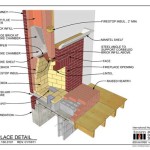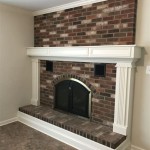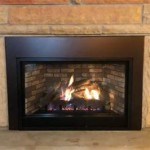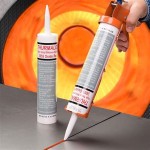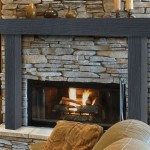Electric Insert For Wood Burning Fireplace: A Comprehensive Guide
Wood-burning fireplaces, long revered for their ambiance and traditional appeal, can present certain drawbacks. These often include issues with air quality, maintenance, and overall efficiency. An electric fireplace insert offers a potential solution, providing the aesthetic benefits of a flame display without the inherent challenges associated with burning wood. This article explores the concept of electric inserts for wood-burning fireplaces, detailing their functionality, benefits, selection criteria, installation process, and operational considerations.
Understanding Electric Fireplace Inserts
An electric fireplace insert is essentially a self-contained heating unit designed to fit within the existing cavity of a traditional wood-burning fireplace. Unlike wood-burning fireplaces that rely on combustion, electric inserts use electricity to generate heat. They consist primarily of a heating element, a fan, and a visual display that simulates flames. The heating element, typically a coil or infrared heater, warms the air, which is then circulated into the room by the fan. The flame effect is achieved through various technologies, including LED lights, holographic projections, or rotating mirrors, creating a realistic and visually appealing simulation of fire.
The primary purpose of an electric insert is to provide supplemental heat to a room, typically ranging from 400 to 1,000 square feet in area. The heating output is generally measured in British thermal units (BTUs) or watts. Furthermore, electric inserts offer the advantage of operating with or without heat. This allows homeowners to enjoy the visual ambiance of a fireplace even during warmer months, without raising the room temperature.
Electric inserts are available in a variety of sizes and styles to accommodate different fireplace openings. They are designed for relatively simple installation, often requiring only a standard electrical outlet for power. This ease of installation and operation makes them a popular alternative to traditional wood-burning fireplaces, particularly for those seeking a more convenient and environmentally friendly heating solution.
Key Benefits of Electric Fireplace Inserts
Electric fireplace inserts provide a multitude of advantages compared to traditional wood-burning fireplaces. One of the most significant benefits is improved energy efficiency. Whereas wood-burning fireplaces are known for losing a significant portion of heat up the chimney, electric inserts convert nearly all electricity into heat, resulting in greater heating efficiency and reduced energy costs. This allows for more effective and targeted heating of the room, minimizing wasted energy.
Another major benefit lies in the area of improved air quality. Wood-burning fireplaces release particulate matter and other pollutants into the air, both indoors and outdoors. These emissions can contribute to respiratory problems and negatively impact overall air quality. Electric inserts produce zero emissions, as they do not involve any combustion process. This makes them a cleaner and more environmentally responsible heating option, particularly for individuals with allergies or respiratory sensitivities.
Electric inserts also offer significant advantages in terms of convenience and maintenance. Wood-burning fireplaces require constant tending, including chopping or purchasing firewood, building and maintaining the fire, and cleaning up ashes. Electric inserts require minimal maintenance, typically only involving occasional cleaning of the unit. They can be easily operated with a remote control or thermostat, allowing for precise temperature control and automated operation. This eliminates the need for manual labor and provides a more convenient and user-friendly heating experience.
In addition to the practical benefits, electric inserts offer aesthetic advantages. They are available in a wide range of styles, finishes, and flame effects, allowing homeowners to customize the appearance of their fireplace to match their décor. Some models even feature adjustable flame speeds, brightness levels, and ember bed colors, providing a highly realistic and customizable flame display. This allows for a personalized and visually appealing fireplace experience.
Selecting The Right Electric Fireplace Insert
Choosing the appropriate electric fireplace insert requires careful consideration of several factors. The first and most crucial step is to measure the dimensions of the existing fireplace opening. The insert must fit snugly within the opening, ensuring proper ventilation and a seamless aesthetic appearance. Accurate measurements will prevent purchasing an insert that is too large or too small for the available space.
Next, evaluate the heating requirements of the intended room. Consider the room's square footage, insulation level, and climate. This will help determine the appropriate BTU or wattage output of the insert. As a general guideline, 1,500 watts can typically heat a 400-square-foot room effectively. However, homes in colder climates or with poor insulation may require a more powerful unit.
Consider the different types of heating technology available. Electric inserts commonly employ either coil heaters or infrared heaters. Coil heaters are more traditional and tend to be less expensive, while infrared heaters are known for their energy efficiency and ability to provide targeted warmth. The choice depends on individual preferences and budget considerations.
Evaluate the available features and options associated with the insert. These may include adjustable flame settings, thermostatic control, remote control operation, timers, and various safety features such as overheat protection. These features can significantly enhance the user experience and provide greater convenience and control over the heating process.
Consider the overall style and aesthetic of the insert. Electric inserts are available in a wide variety of designs, ranging from traditional to modern. Choose a style that complements the existing décor of the room and reflects personal preferences. Factors to consider include the color, finish, and material of the insert, as well as the type of flame effect and ember bed design.
Finally, read reviews and compare prices among different brands and models. This will provide valuable insights into the reliability, performance, and value for money of different options. Look for inserts that have received positive feedback from other users and are backed by a reputable manufacturer's warranty.
Installation and Operation
The installation of an electric fireplace insert is generally a straightforward process that can often be completed by the homeowner. However, proper installation is crucial to ensure safe and efficient operation. Before beginning the installation, carefully review the manufacturer's instructions and comply with all applicable building codes and safety regulations.
The first step is to prepare the fireplace opening. Clean the interior of the fireplace to remove any debris, ashes, or soot. Inspect the chimney and ensure that it is properly sealed to prevent drafts. If necessary, install a chimney cap to further prevent debris or animals from entering the chimney.
Next, carefully position the electric insert within the fireplace opening. Ensure that the insert is properly aligned and centered. Secure the insert in place using screws or brackets, as specified by the manufacturer's instructions. Connect the insert to a standard electrical outlet. It is crucial to use a grounded outlet and to avoid overloading the circuit.
Once the insert is installed, test its operation by turning it on and verifying that the heating element and flame effect are functioning correctly. Adjust the settings to achieve the desired temperature and flame appearance. Monitor the insert closely during the initial operation to ensure that it is not overheating or experiencing any other problems.
Proper operation of an electric fireplace insert involves several key considerations. Always follow the manufacturer's instructions for safe and efficient operation. Avoid placing flammable materials near the insert, as this could pose a fire hazard. Regularly clean the insert to remove dust and debris, ensuring proper ventilation and optimal performance.
If the insert is equipped with a thermostat, adjust the temperature settings to maintain a comfortable and consistent room temperature. When not in use, turn off the insert to conserve energy and prevent unnecessary wear and tear. If the insert malfunctions or experiences any problems, immediately disconnect it from the power supply and consult a qualified technician for assistance.
By following these installation and operating guidelines, homeowners can enjoy the benefits of an electric fireplace insert safely and effectively. The result is improved heating efficiency, enhanced air quality, and a convenient and aesthetically pleasing fireplace experience.

10 Best Electric Fireplace Inserts Of 2024 Tested And Reviewed

Fireplace Insert Installation Wood Inserts Gas Pellet And Electric

Modern Flames Redstone 30 Inch Built In Electric Fireplace Insert Firebox Heater Rs 3021 Fireplaces Depot

Dynasty Fireplaces 32 In Led Electric Fireplace Insert Black Matt Ef44d Fgf The Home Depot

The 1 Electric Fireplace Insert Dealer 110 Low

Electric Fireplace Inserts Ventless Installation

Electric Fireplace Inserts Best Fire Hearth Patio
How To Install An Electric Fireplace Insert

Valuxhome 50 In Electric Fireplace Insert With Overheating Protection 750 Watt 1500 Black Insert50t Hd The Home Depot

1524mm Flush Insert Or Wall Hung Designer Electric Fireplace 2024 Model
Related Posts

